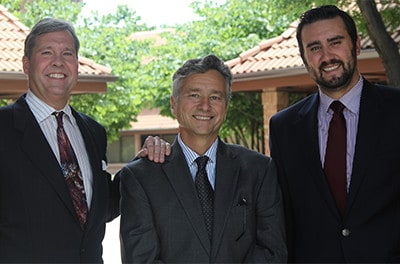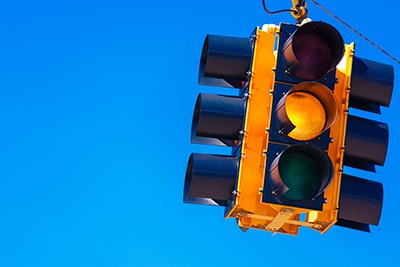A lack of understanding and nationwide standards can make a yellow light at an intersection, a dangerous place to be.
As you approach the intersection, the traffic light switches from green to yellow- just what exactly are you supposed to do? At the risk of sounding dramatic, your choice could have grave consequences. Your morning commute could turn into a side trip to the closest hospital emergency department.
Yellow signals are intended to maximize safety at intersections, however, the general lack of knowledge about yellow light protocol and regulations can turn intersections into danger zones.
Some states require a driver to stop at a yellow light, while it is legal to be in the intersection during a red light in other states- provided the front of your vehicle passed the stop line prior to the light turning red.
The general rule states that a driver should stop at a yellow light unless it would be dangerous to do so. The problem arises, however, when it is unclear precisely what would be more dangerous- to stop or to proceed through the intersection.
Adding to the confusion surrounding yellow traffic lights is the fact that there is no nationwide standard for the length of a yellow traffic signal. Between the recommended minimum of three seconds and the recommended maximum of six seconds, signals can vary from state to state, city to city, and even street to street.
Add to that, the difficulties of gauging vehicle speeds and distances between automobiles, and you come up with an equation for disaster. Not only are red light runners the most frequent cause of accidents at intersections, but due to the increased speed, they can be some of the most dangerous.
Car accidents kill 40,000 people every year in the U.S. Red light runners are responsible for approximately 22 percent of those accidents, making them the most common type of crash according to an Insurance Institute for Highway Safety study.
In fact, more than one-third of drivers confess to having run a red light sometime in the past 30 days when they could have safely stopped. Rear-end accidents are common at yellow traffic lights as well, when drivers did not anticipate the vehicle in front of them stopping.
The best rule of thumb, especially in a confusing situation such as a yellow signal, is to always practice defensive driving. It can be difficult, sometimes, to know exactly what you should do in any given situation, however, playing it safe is always a wise option. Avoid an accident, a fine, or a hospital visit by waiting until your light is once again green.
Contact Our Experienced Broomfield Personal Injury Lawyers
 If you or someone you love has been injured in a car accident in Broomfield, Northglenn, Westminster, Thornton, or anywhere in Colorado, it is important to contact our experienced personal injury attorneys immediately. At Hull & Zimmerman, P.C., our committed personal injury lawyers are dedicated to the belief that everyone deserves justice. Contact us at (303) 423-1770 or (866) 385-3505.
If you or someone you love has been injured in a car accident in Broomfield, Northglenn, Westminster, Thornton, or anywhere in Colorado, it is important to contact our experienced personal injury attorneys immediately. At Hull & Zimmerman, P.C., our committed personal injury lawyers are dedicated to the belief that everyone deserves justice. Contact us at (303) 423-1770 or (866) 385-3505.
Our personal injury lawyers have extensive experience representing injured accident victims in Broomfield, Arvada, Superior, Lafayette, Louisville, Erie, Brighton, Commerce City, Northglenn, Westminster, Thornton, Longmont, and throughout Colorado.

